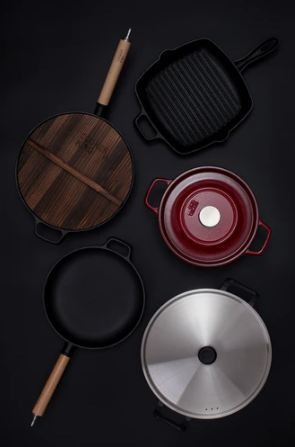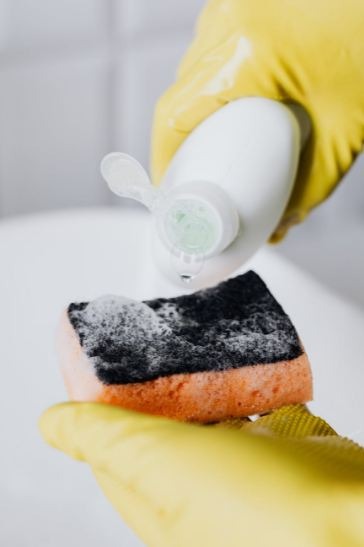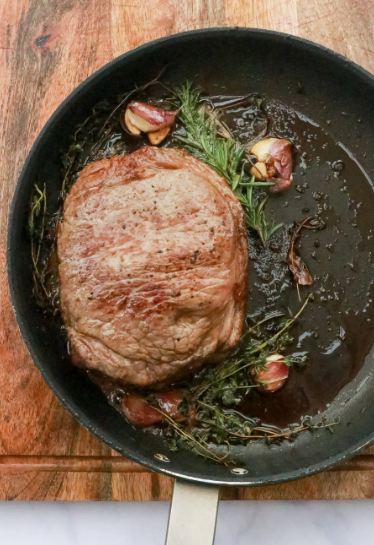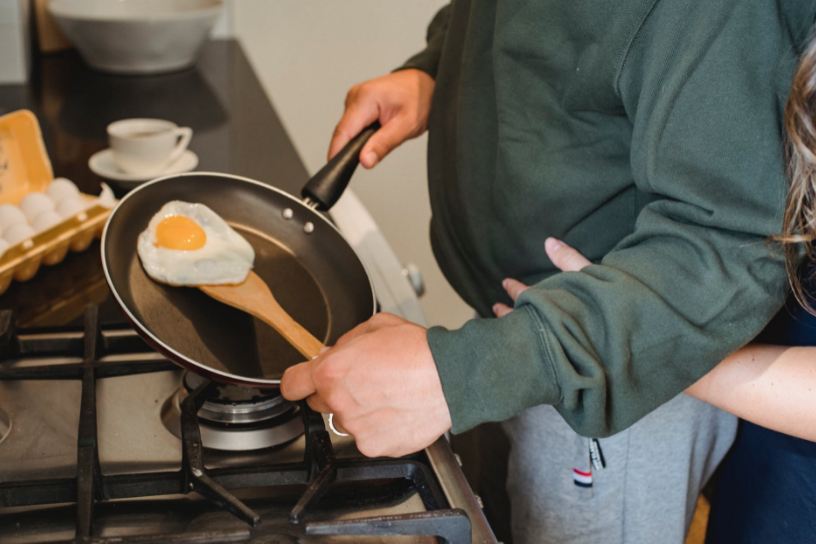Cooking is an art. While some people only enjoy eating food, others like to spend their time in the kitchen perfecting recipes. They find their passion in cooking, and nothing makes them happier than feeding delicious food to their loved ones.
Cooking enthusiasts love everything about the process of cooking. They would go crazy over a sale in the market that’s offering their favorite kitchenware at discounted prices. They would hoard beautiful crockery and cutlery to satisfy their inner cravings and also look fabulous on the shelves. Apart from the aesthetics, the most important thing for such enthusiasts is the right kind of cookware and tools.
A person who spends a good amount of time in the kitchen and loves cooking knows that not everything can be cooked in one pan. For different types of dishes, different pans are required. Some require high heat conductivity, while others demand less maintenance.
There are two types of pans commonly used in the kitchen – stainless steel pans and cast iron pans or skillets. Both of them are effectively used in cooking. But how they are different from each other and what makes the better cooking pan, read on to find out more:
The Material of Pans
To start the battle of the pans, you first need to know what material both are made from. Knowing the pan’s material will help you better understand the difference so that you can judge yourself what pan is better.
Stainless Steel
Stainless steel is an iron alloy made of two main metals – chromium and nickel. The ratio between them varies. Some use 18% chromium and 8% nickel, while some use 10% nickel. The difference in the percentage of the alloy makes up the “layering” of the pans. Since both these metals are non-magnetic and do not conduct enough heat, an additional layer of aluminum and copper is added at the bottom of the pan. This layer or “clad” spreads the heat throughout the pan.
In some pans, aluminum and copper disc is installed at the bottom instead of proper layering. Such discs are magnetic at the bottom to be compatible with the induction-type cooking tops.
3-ply or even 5-ply stainless steel pans are also made that have more layers of conducting metals and are generally more effective than a single-ply pan. The inner part of the pan is usually not non-stick, nor is it seasoned with any compound. But it can be seasoned to get a non-stick surface. To know the best seasonings oils for stainless steel pans, click here.
Cast Iron
Cast iron pots and pans are heavy-duty cookware that is made from an alloy of iron and carbon. The ratio of carbon in the alloy is more than 2%. They are porous from the inside and get rusted easily. The original cast iron cookware did not have any kind of enamel to cover the insides. The food tends to stick to the surface, which makes cast iron pans ideal for searing purposes.
For other purposes which require a non-stick base, seasoning with fats is recommended by chefs. Seasoning is done before the actual cooking process, and it does a fairly good job of making the pan stick-resistant.
Following are the top 5 reasons which make stainless steel pans better than cast iron pans:
1. Your Food Will Taste Better
The surface of the cast iron pans is reactive to the acidic food items. They leave a metallic taste to the food, which is not necessarily harmful but is not exactly what you cook. If you are not regular with the seasoning, the extra flavor will increase with every cook, and you will eventually start hating it.
Stainless steel pans have non-reactive surfaces. No matter what you cook in them, you will get the exact taste you are striving for. Even if the food sticks to the surface, you will not get any extra unpleasant taste. On the contrary, sticking can be a good idea as it makes a crispy skin for fish and chicken.
2. Easier to Clean
We all dread the cleaning that comes after a delightful meal. While cooking is not so difficult, cleaning can be a monstrous job, especially if you have piled up many pots. Cleaning stainless steel is a child’s play. No matter how much the food gets stuck at the bottom, you can easily scrape it off with a wire sponge. The scraping does not damage the pot in any way, nor will it leave any residual taste.
On the other hand, cast iron cookware has porous surfaces. They should not be scrubbed and scrapped since it would damage them. This is why some of the oil from the previous cooking is left in the pores. You may feel an odd taste in your next meal if the pan was not seasoned properly. Also, you cannot place a cast iron pan in the dishwasher. You will always have to wash it by hand and with only soap and water.
Even after cleaning it, you must season it well with oil for using next time. If a cast iron is not seasoned regularly, the porous surface will keep ruining the food.
3. Conduct Better Heat
It is a well-known myth that cast iron pans heat up better than any other metallic pan. Why is that a myth? That is because cast irons develop “hot spots” at the bottom mid part of the pan. The heat does not get evenly distributed to all parts of the pan. The hot spots are the parts that get lesser heat with every cook. Cast iron takes longer to heat up due to its thick material, but once it gets heated, it retains the temperature. This factor makes cast iron pans best for slow, low-heat cooking. But for longer periods, it loses its conductivity.
Stainless steel pans have aluminum or copper layers installed between them. Steel itself is a poor conductor of heat, but aluminum is one of the best conductors. Due to this layering or cladding, the heat evenly distributes throughout the pan. It also does not develop any hotspots like iron. The more layers the pan has, the better heat conductivity it shows.
4. Searing is better
Now, this is a real deal. Cast irons have always been famous for getting the best sear on meats, locking flavors inside with crispy on the outside. As already explained, cast iron requires proper seasoning, and even after cleaning, it retains some of the flavors and oils from the previous cooking. Searing a nice piece of meat requires heat and a smooth surface to give it the desired texture.
Cast iron pans can do a pretty good sear, but they are nothing compared to the job done by stainless steel. Stainless steel requires no seasoning for the sear. Let the protein stick; it will only boost the flavors. The even heat from the pan ensures that all parts of the meat get an even color, unlike the cast iron. And of course, after cooking, cleaning stainless steel is much easier than a cast iron.
5. They are Sleek and Lightweight
Undoubtedly, cast iron pans have a very bulky and macho kind of look. It also makes great outdoor cookware due to its heavy body. But the stainless steel is the real charmer here. They are lightweight and easy to move around. The sliver and gray color easily match with the entire kitchen decorum. You can even serve hot food in the pan right in front of people, and it won’t look bad at all.
Due to its smart size and design, it can be placed with other crockery items on a dining table. Cast iron, on the other hand, is just not fit for this kind of job. They are better placed in the kitchen among other heavy cookware.
The Battle of Pans
We intended to introduce you to the two beasts of the culinary world. Both cast iron and stainless steel are best in one way or another. While many young foodies prefer light and sleek stainless steel pans, more mature enthusiasts are happy with high-maintenance cast iron pans. The choice is always personal, and one choice does not undermine the other. All that matters is the love for food and cooking and the journey to keep discovering new products.




